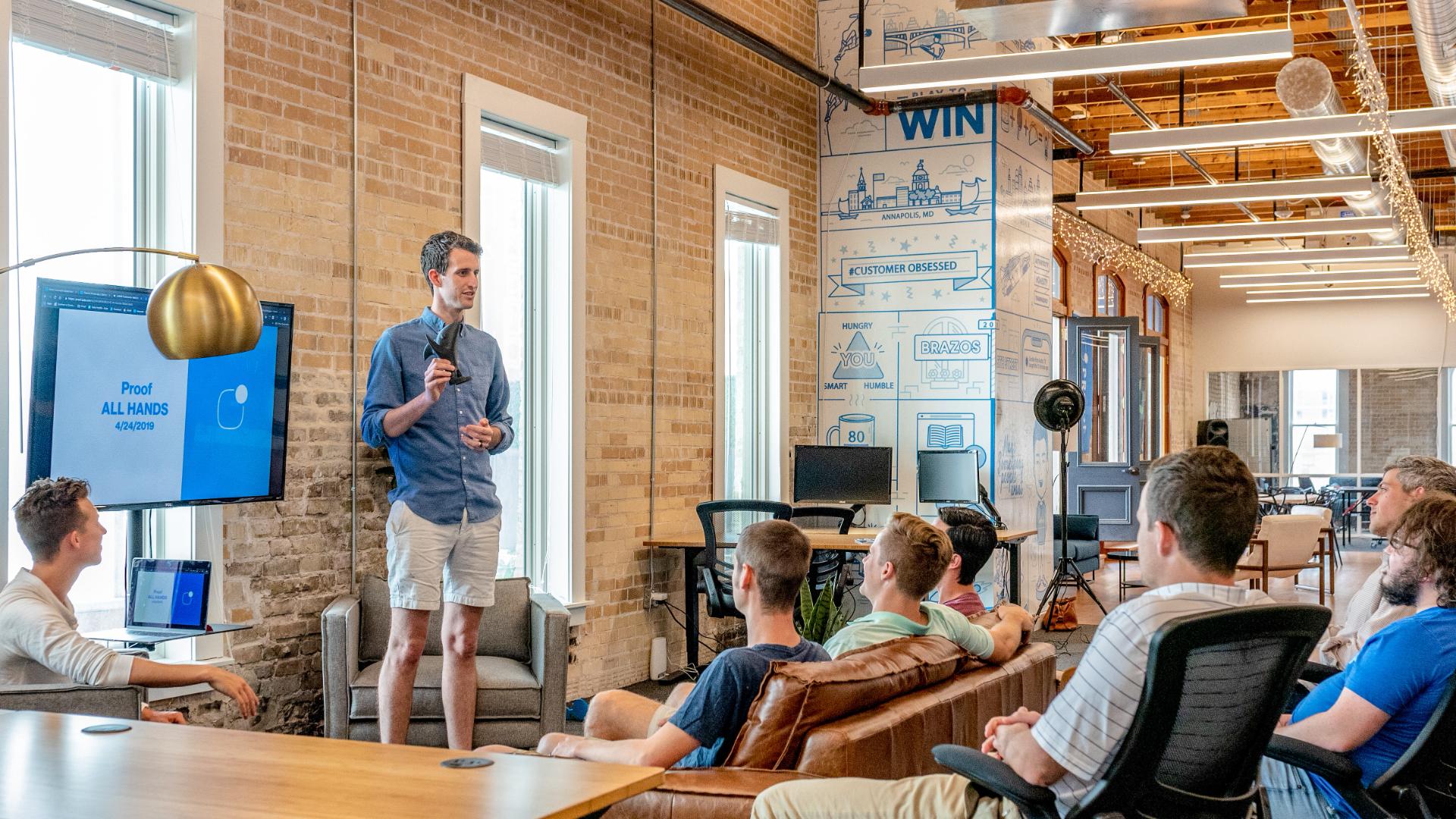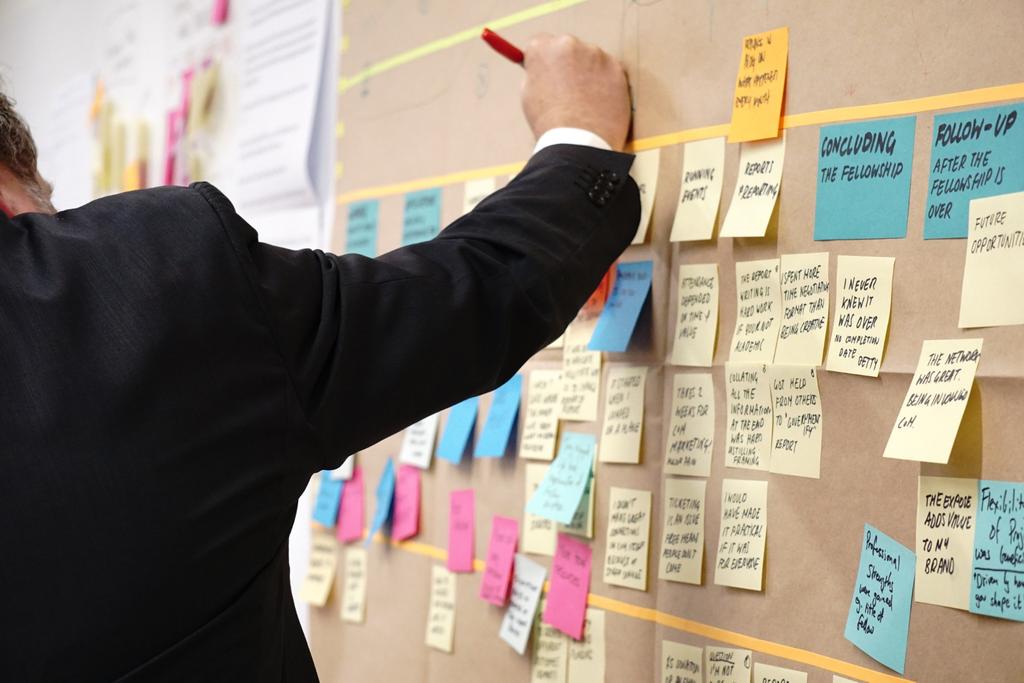Are you looking to improve your restaurant staff management?
Not sure what advice to follow?
When you’re starting a new restaurant, you may need to take on the role of human resources manager as well - especially in small restaurants.
If that's the case, you have to be up to a very difficult challenge. The good news is that it is not impossible!
In this article, I'll talk about the various duties of a restaurant HR manager, share some tips on how to improve your staff managing skills, and more.
This guide will be useful for people who do not have much experience in this field and even for people who are already working as a manager in a restaurant
Let's get started!
How to select the staff of a restaurant?

One of the most difficult duties of a restaurant HR manager is hiring staff.
In fact, this isn't the first time we've talked about it — we've got a complete guide to hiring waiters.
However, rather than being difficult, the task of hiring is strenuous and arduous.
How could you correctly judge whether an individual would be a perfect fit for the position they want and probably need?
Therefore, you must know very well how to read people, conduct face-to-face or video interviews, and more.
Below I will talk about some aspects that you should consider.
Create a process to hire staff

Like every process that you can carry out, the hiring of staff can be systematized.
This is an example of what you should do:
1. Study the position you want to fill:
You must study the position you want to fill properly to know what type of person would be a good fit and what skills they would need to perform well.
2. Create a realistic job description:
Many people make the mistake of not properly informing potential candidates about the role when they are hired. This is vital to recognizing people willing to meet the needs of the position as a whole!
3. Create a profile of the ideal worker:
It is recommended that you create a profile with the qualities, skills, and more that the person should have to fill the position.
This is just a guide — remember there are no perfects and there may not be people who can do absolutely everything. That's what training is for!
4. Start the recruitment of potential candidates:
You can use different web platforms, your restaurant’s social media, and more to bring the job proposal to the candidates. Make sure to provide direct contact info, too!
5. Receive resumes and applications:
Resumes, whether physical or digital, are the main tool you should use to verify that each candidate has the skills required for the position.
6. Compare the candidates:
Make the comparison of the candidates — and include the profile of the ideal worker for comparison.
7. Interview potential candidates:
This is a basic part of recruiting. You should ask questions pertinent to the position, in addition to observing the responses and the attitude of the person. In addition, you should also observe their personal appearance. Being well-groomed speaks a lot about one’s personality and attitude!
8. You can add a supervised trial period:
Trial periods are totally optional and usually apply when there is already staff in place and work to do.
9. Make the decision:
The last step is to choose the most promising candidate!
If you did a trial period, it is important to consult the opinion of the workers who are already part of the team.
After all, the person you hire will not be working under your direct supervision.
Qualities of a good employee
Often, we focus on skills rather than qualities — yet a suitable employee has a good balance of both.
These are some of the qualities you should look for in a good employee:
1. Enthusiasm to learn and master what the position requires
Sometimes, it is better to hire a person without much experience, but who has a lot of enthusiasm and curiosity to learn, than to hire a person who knows everything you need, but is arrogant and self-centered.
2. Good work ethic and proactivity
An employee must be proactive and seek solutions after asking the right questions.
In addition, the ideal employee not only adapts to the established work, but also looks for ways to improve what he does, and even improve processes.
3. Empathy and consideration
Someone considerate of their co-workers will have better work mechanics and relationships with them.
4. Integrity
Integrity is a vital aspect for each and every restaurant employee.
You have to trust that the person will do the right thing at all times!
5. Tendencies to teamwork

A person who works alone, who seeks to compete negatively, and who makes fun of the mistakes of his colleagues — instead of trying to help — will never be fit for a team.
The ideal employee looks for opportunities to help their coworkers, to support them when needed, and more. That's why it's called a kitchen brigade!
Train new personnel step by step

When training new personnel, you can do it in person, or you can delegate the activity to the person in charge of the specific brigade of which the new member will be part.
However, you will need to make sure that the training is systematic, thorough, and step by step.
This avoids overstimulating the new hire with too much information at once.
To do this, consider taking the following steps:
1. Create a training system or plan for each brigade in the restaurant
This is another of the processes that you can systematize with relative ease.
To create a training plan, simply write down a list of job activities and organize them from easiest to hardest. You can consult the help of an existing employee to create it.
Then, make sure to teach the employee each of the activities thoroughly, while sharing vital information, and common mistakes. Again, you can delegate this to another worker!
2. Teach by example
This step is self-explanatory. Just run the activity you want to teach the new employee in front of them!
In addition, you should provide them with information that is useful to them. Tips, tricks, and more to make the job easier while you build a better work relationship.
3. Supervise the training period at all times
This is one of the most important aspects of the training period.
After you show the employee how it's done, it's time for them to try it personally.
Make sure to correct mistakes and closely monitor riskier activities. This way you will avoid accidents in the future!
4. Explain the rules in depth
The training process is the ideal time to explain the various rules that staff must adhere to.
You must also explain the different consequences, penalties, and more if they do not comply.
Try not to be particularly intimidating and use assertiveness instead.
5. Repeat the training process before getting started with all the work
Once the employee has already performed the planned activities once or twice, you can repeat the training — or a shorter version — to verify that everything is done correctly.
6. Assign a mentor to the newcomer
The process does not end when you already know that the employee knows how to perform the activities safely.
Instead, you will need to assign the employee a temporary mentor.
This is very easy to do if you are dealing with cooks or kitchen assistants, as they will simply have to respond to the person above them on the restaurant organization chart.
If they are waiters or part of the cleaning staff, you can assign them an employee in the same position who has more experience in the position.
You can also take this as an opportunity to evaluate the performance of both the newcomer and the mentor!
Communication Skills
Every person on a restaurant's staff should have excellent communication skills with one another — and that includes the chief of a restaurant's human resources.
To improve your communication skills as a manager, you will need to do many things at the same time.
Here is a small list that will be useful to you:
- Promote communication whenever you have the chance. If something happens, you should know about it!
- Communicate frequently with team members.
- Don't just talk to them about work!
- Learn when and how you can be friendly — always while remaining professional.
- Try to remember everyone's names. This becomes very difficult if you handle a very large staff, so you can try to remember the names of those closest to you (or casually implement the use of name tags).
- Always be clear in your orders.
- Promote, apply, and receive constructive criticism.
- Ask questions!
- Repeat yourself more than once to avoid confusion. Stop when you think it's annoying!
- Speak correctly and use an appropriate tone.
These tips will improve your communication skills.
Promote teamwork
Promoting teamwork in the different brigades of the restaurant will improve their operation significantly.
It is a very important factor that affects:
- The speed and quality of the service.
- The speed of the kitchen.
- The efficiency of the cleaning staff.
- The relationship between the different types of staff.
- And the relationships between the staff.
However, this won’t take just a day — consistency is the most important thing.
You also need to have a strategy to achieve it.
Below, you will find some tips that will be useful to promote a good working relationship and collaboration among your employees.
1. Build a family-like relationship
Teamwork is so important and consistent that eventually, all restaurant employees get to know each other deeply.
Therefore, it is advisable to foster a friendly relationship between your employees — much like family relationships.
Often, especially if you hired the right people early on, this will happen naturally.
2. Promote non-work-related staff events

A good way to foster a relationship of friendship and respect is to encourage informal events with staff.
Simple things, like birthday parties, after-work outings, and more will help you achieve this.
In some cases, and with the correct organization, you can carry out larger events such as trips or gatherings and meals.
A little creativity can help you with this tip!
3. Use positive reinforcement
It is important to compliment, promote, and even give words of encouragement to staff as they perform their duties correctly.
However, try not to congratulate just one employee, but the entire team that makes the restaurant possible.
4. Specify the roles and lines of communication
Specifying the roles and ranks of each employee is vital for them to have good communication with each other.
This is crucial if an employee has doubts, questions, and more regarding what to do.
For example, after you hire new employees, they shouldn't talk only to the person with whom they’ve developed trust or who hired them.
Instead, they should communicate with their co-workers, supervisors, and more — and if not possible, with the manager in person.
5. Punish abuse of authority and workplace harassment
Like any business or company, a restaurant operates with ranks and positions of authority.
That is why you should be attentive to the treatment that occurs between people with higher positions and their subordinates.
Abuses of authority and workplace harassment are unfortunately common in kitchens — especially if you hire people without the qualities mentioned above.
Make sure to sanction this inappropriate behavior!
6. Be a role model
Instructing staff to treat each other well and then treat them poorly in person is not smart.
Practice the communication skills mentioned above and always try to be kind and fair to all subordinates.
Note: Although these tips are great to improve teamwork, it is worth mentioning that it is almost impossible to improve it if you do not hire employees with good qualities from the beginning.
Create goals for different work teams

An efficient way to foster a good working relationship and collaboration among restaurant employees is to create different goals for each crew — be it kitchen staff, cleaning staff, or the waiters.
To create them, you must use the SMART model to create them.
This will help you to:
- Improve teamwork.
- Increase the productivity of each staff member.
- Minimize mistakes in daily activities.
- And to optimize the performance of employees and the operation of the restaurant in general.
You must create goals for each team and for all staff.
This should also be accompanied by work incentives!
Below are some examples of the different objectives you can create for restaurant brigades.
Goals for waiters

Waiters are a vital part of the restaurant’s staff. That makes it much easier to assign goals to the front-of-the-house area staff.
You can set goals such as:
- Minimize errors in customer orders. You can set a goal of fewer than 10 errors or less per month depending on the capacity of your restaurant.
- Every server should know the menu from top to bottom, including the extras.
- Improve the speed of service. You can commission the head waiter to time how long each waiter takes to bring food to the table and keep personal times on a blackboard.
- Comply with the rules of dress and personal hygiene at all times.
- Think of new ways to improve the service and start applying them. This can be a group activity of the waiter’s brigade.
- Keep outdoor areas clean. This helps you with improving your restaurant’s exterior and overall makes it look better from the outside.
You can use the help of the head waiter to create these goals.
Sample goals for kitchen staff

The objectives of the cooks, assistants, and kitchen cleaning staff vary depending on the workflow you have established in your restaurant.
Here are some examples:
- Improve, optimize, and speed up the preparation of dishes.
- Improve the cleanliness of the kitchen area. For this, you will need the support of the sous-chef or the different station managers.
- Adjust the use of ingredients and portions.
- Apply safety protocols and avoid accidents. For this objective you can also establish a minimum number of accidents per month — hopefully it will not be very high.
- Improve the portion system.
- Increase production.
- Suggest, create, and test new additions to the menu.
To achieve these goals you will need constant and transparent communication with the kitchen staff — especially with the higher-ranking employees.
Note: To improve your response to accidents, you should always have a plan risk coverage for your restaurant.
Examples of goals for the cleaning staff
The objectives of the cleaning staff are related to the neatness of each of the restaurant's environments.
In general, you want to promote goals specific to the type of restaurant you run and the equipment used in it.
For example:
- Clean the slicer daily.
- Clean the ice machine every week.
- Clean windows and cabinets three times a week.
- Avoid complaints from guests about the hygiene of the spaces.
These goals will require extensive communication with the front-of-the-house crew and cleaning team leaders. Why?
In the case of complaints, diners do not report them directly to the cleaning team, but to the waiters or the receptionist.
Sample goals for all staff
Goals for all staff can also be of different natures.
For example:
- Increase the speed of all services offered in the restaurant.
- Avoid confrontations between different teams.
- Optimize processes so that the restaurant flows better.
- Avoid communication errors between teams.
All of these goals will require a lot of teamwork — that's why it's so important!
Get organized, organize the staff, and you will conquer!
The key to leading any restaurant to success is the correct management of its staff and resources.
However, this task is subdivided into many — of which organization is among the most important.
Both the organization of the staff and that of the head of human resources of a restaurant are vital, especially since they must be related correctly.
In this section, I will give you some tips on how you can improve your organization and staff organization so that you can maintain a good level of productivity in your restaurant.
Organizational Tips for Restaurant HR Managers

There are tons of organizational tips for restaurant HR managers that you can use.
However, the most important are those that have a utilitarian, practical, flexible, and systematic approach.
The following tips will be useful to organize yourself:
1. Create habits and routines that you repeat constantly
Creating habits and routines is beneficial and facilitates going through the easier tasks of each day quickly.
Also, this is a good way to stay active in the early hours of the morning. After the easy stuff is done, you can focus on one or two activities that require more concentration.
When you enter the zone, you will find that the job of managing your restaurant will become easier.
This is also something you should promote when managing your restaurant staff.
2. Create to-do lists
The human resources manager of a restaurant has to fulfill many functions.
To-do lists are a good way of staying organized at all times.
However, it shouldn't just be simple lists.
We recommend creating a simple organizational scheme that allows you to take care of all the things you must do in an orderly manner.
It is also important that you put the most difficult or important items of the list at the top so you can finish vital work without setbacks.
Of course, this doesn’t include the items on your routine — only those things that require special attention.
3. Use time organization tools
Time management apps are a great way to manage your personal and professional life.
When you start to use them — or simply to measure the time you spend on each activity — you realize how much time you possibly waste per day.
Of course, the trick to using these types of applications is to create realistic estimates of what each activity will take.
A fairly efficient approach is to create different time slices in the app and assign certain types of activities to those slices, rather than specific activities.
For example, in the first hour of the day, you can carry out activities related to “inspection of work areas”, while taking a careful tour through each station.
In a short time, you will realize how long it takes you to complete each type of activity, and you will adjust more to complete them in record time or maintain an average time.
4. Be proactive, preventive, and think ahead
Being proactive, preventive, and thinking ahead will give you the advantage of working in the future, instead of the present.
Instead, you will prepare future projects, prevent potential staff errors by instructing them in advance, be aware of potential restaurant risks, and take a proactive approach to troubleshoot errors and problems.
Managing is all about thinking strategically!
5. Create measurable goals for yourself as a manager
I already mentioned the staff goals, but the manager's goals are missing!
The manager's goals are to create strategies that make the staff perform better, apply them, improve them, and institute them as good practices if they are effective.
Your goals are to help workers achieve theirs!
You do this by organizing them and giving them the right set of instructions.
6. Delegate
Often, a manager doesn't get his hands dirty, in the sense that he doesn't do a lot of the jobs in the job description — he just delegates them.
This can be seen as a mistake, however, delegating is a very smart decision that will make it easier for the manager to organize.
How do you know if you can delegate an activity? Basically, you can delegate two types of activities: those that are very easy or those that are very difficult.
It is more important that you delegate the easier ones, while you personally take care of the more difficult ones. Why?
Because a restaurant human resources manager is not exempt from strengthening his weaknesses!
7. Stay informed of trends in restaurant staff management
Another way to improve your weaknesses is to stay informed on technological or methodological trends in the management of restaurant staff niche.
There are many systems in place that can help you manage restaurant staff.
For example, the point of sale software Waiterio is one of the best you can use to time service, manage your restaurant staff, the menu, monitor sales reports, and more.
Set rules for each restaurant employee
Setting work rules for each restaurant employee is something you must do from their first day on the job.
There are different types of rules to consider before creating a set of rules for each squad or team.
Below you will find the most common ones.
Rules of personal hygiene and presentation
Hygiene is a vital part of a restaurant — that's why cleaning supplies and equipment is an important part of the list of everything you need to have in a restaurant kitchen.
However, it does not end there, as not only the restaurant must be clean, but also all the staff.
For that reason, the rules of personal hygiene should contain precepts on personal appearance, cleanliness of the uniform, rules on handwashing, the use of perfumes, and more.
Safety rules
Due to the high importance of industrial safety in a restaurant, you will need to establish a few safety rules.
Things like wearing slip-resistant shoes in the kitchen, using “wet floor” signs when necessary, wearing special gloves to remove hot items from the oven (not cloths!), And having restaurant safety measures and protocols memorized.
This not only applies to kitchen staff, but all employees should be aware of these rules, regardless of their work area.
Note: Because of the pandemic, you should also consider adding safety rules to avoid sickness.
Rules of service, education, and dealing with customers
It is important to establish strict rules for the waiters.
They should always treat diners well, with politeness and good manners, speak clearly and concisely, be attentive to their needs, be attentive to the needs of their teammates, and more.
If applied correctly, these will cause a good impression of the service offered at the restaurant!
Rules for breaks
Restaurant break times should also have rules.
For example, rules about the length of the break, the location where the break will be taken, the activities that can or cannot be performed during the break, and more.
This is crucial to avoid problems such as employees spending time in inappropriate areas (such as in front of customers) or even to promote an ideal use of the break period.
Reward good work and sanction when necessary
If the rules exist, there are also staff members who follow them, and individuals who don’t.
In addition to being totally clear when you set the rules, you must set penalties for when they are broken.
Layoffs are necessary in some cases
One of the most difficult responsibilities of an HR manager is knowing when to let go of an employee.
It is something that will eventually happen when managing the staff of a restaurant.
For that reason, you must create a process to dispatch those workers who can no longer be part of your team.
To facilitate this work, you must rely on the rules — that is why all staff should know them.
Here are some of the most common causes of dismissal:
- Failure to do the job competently.
- Ignoring assigned work or wasting a lot of time to complete it.
- Being late many times or not showing up repeatedly.
- Improper behavior in the work area. For example, drunkenness or workplace harassment.
- Theft of kitchen supplies or ingredients.
- Insubordination.
- Breaking the rules more than once.
It is recommended that you see layoffs as a last resort — when you have already verified that the attitude of the employee does not improve, the strategies to improve their performance do not improve, when the sanctions have no effect, and when the training is not enough.
Hopefully, you won't have to face this challenge in your time as a manager or else you will have to start the hiring process again!
Be flexible, adaptable, and attentive
A restaurant manager should be flexible and attentive when dealing with the staff.
No matter how many plans and goals you may have, not everything will always be under your control.
That is why you should create alternate plans (A, B, C, etc.) so that you can react appropriately.
You will also have to learn that some plans fail, and in those cases where the most unexpected things happen, you will have to focus on making the right decisions based on your best judgment.
Also, you should be courteous and considerate with staff — they are human beings!
Staff mistakes are permissible to some extent, weaknesses can be strengthened, and staff can always be taught and trained better.
This depends on your personal judgment — and when in doubt, think about how you would like to be helped in their place.
Manage your staff well to make your restaurant run smoothly
The staff of a restaurant — or of any business — is the energy that moves the machinery and equipment of your restaurant.
Without them, you would not be able to carry out many processes necessary for the proper functioning of a restaurant.
Do you need help to analyze the performance of your employees?
With Waiterio, you will have the possibility to measure the performance of your waiters, to know which of them generates more profits for your restaurant, and you will be able to make decisions based on real data.
Start improving your restaurant staff management today!




